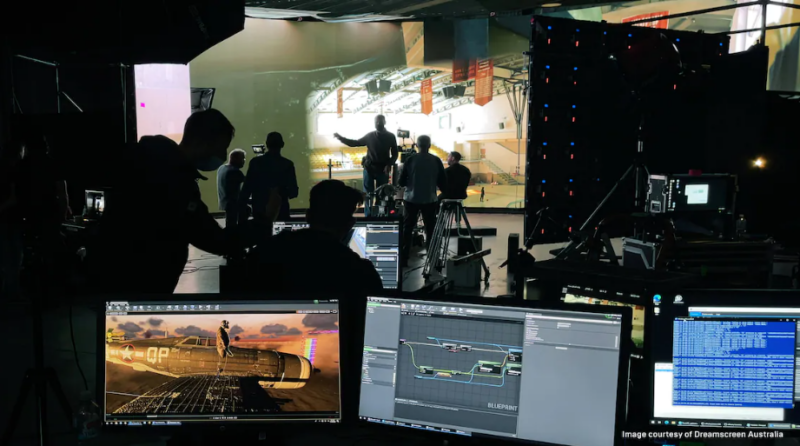Virtually Limitless

Very recently, virtual reality has finally grown out of the ridiculous spectacle of the early ’90s into a legitimate display peripheral. Much of the credit for bringing VR back from the brink and into the mainstream consciousness goes to the Oculus Rift, started by a 22-year-old with the world’s largest head-mounted display collection, Palmer Luckey. He designed his own prototype along with gamer and programmer legend John Carmack (creator of Doom, Quake and other best-sellers at ID Software). The developer version — which is still incidentally the only version available — was funded entirely by a successful Kickstarter campaign that brought in $2,437,429 of the $250,000 originally requested.
Let’s back up a bit and clear up some terms. I think it’s probably best to drop what we classically think of virtual reality as a thing. While things have really improved from 1992’s Lawnmower Man, it’s going to be a while before you slip on a headset and experience a convincing alternate reality — or even a slick virtual interface for blasting around the internet like William Gibson’s classic 1984 cyberpunk book “Neuromancer.” We do have headsets — from the previously mentioned Oculus Rift to some great headsets like the Sony HMZ-T3 (with tracking add-on). The second piece is the physical interaction. This can range from just using a mouse and keyboard, game controller, various pointing devices all the way to room cameras that watch and translate your every movement. Even head movement tracking is a type of input. On the lower end, I think Sixense products are going to be one of most cost efficient and effective options. Another exciting option is the omni-directional sliding treadmill, the Virtuix Omni. You stand on a slick concave disc and walk, run, jump and crouch while being held in place in the center. The advantage of this system is its unlimited range and lack of moving parts to break. The downside would be it is not an entirely natural movement.
When it comes to headsets, it’s the extremely low latency head-tracking that sets the Oculus Rift apart from it’s pricier competitors. To create an image that won’t make your physically sick you need the display to perfectly match what your brain expects based on where it’s pointing. That being said — like 3D glasses — there will be some people who cannot use a head-mounted display without becoming sick. Hopefully as the technology improves, there will be less and less people affected this way. The display technology behind the development version of the Oculus Rift is a bit behind at 640×800 per eye, which can produce a slight “screen door” effect on your image. Version two of the developer Oculus is at 960×1080 per eye and and the promised final consumer version will clock in at 1080p using special low-persistence OLED displays, as well as improved tracking hardware. Of course the acquisition of Oculus by Facebook is going to add resources for improving the technology and hopefully increase the production runs.
Right now, all software for the Oculus is in beta, and really could be described as demo experiences. There are a few full-fledged games that sport Oculus support — particularly on Valve’s digital distribution network Steam. Some of these titles include horror game Outlast, Battlefield 4, Call of Duty Ghosts, Team Fortress 2, Doom 3, Half-Life 2, Minecraft, and — noted non-game — Second Life. The demo experiences are pretty amazing, here is a short YouTube video describing a top ten list.
But, that’s not to say there is not still room for established players to come up with some good competition. As I mentioned above, Sony makes a great headset that seems to focus on video and audio quality, but now includes head-tracking. If you want to know more about what the headset is like to use on a daily basis, you should contact Joel Rollins, who loves his. Sony is also splitting off a specific gaming line for the PS4 called Project Morpheus that utilizes the PS4 Move Camera system. Morpheus includes an interesting new development — eye tracking as input. Unconscious eye movements could be predictors as an in-game mechanics, or used in some innovative commercial control applications — not to mention tracking analytics. Samsung is also jumping into the headset game with the Gear VR headset that was recently leaked. Their strategy would be to utilize one of their existing phones as the display.
So why should we care about a small branch of consumer electronics? This area of AV is so new that the first companies to have fully functioning demo setups and to offer comprehensive pre-setup packages will almost certainly stand to make a profit, at least for a while. As the technology spreads and becomes more mainstream, end-users are going to know what to look for and possibly roll their own setups — particularly in the HomeAV market. On the pro side, companies are already making an entry to the market — selling both hardware and creating custom software simulations. I ran into WorldViz at InfoComm, which is doing exactly that.
VR can also become a creative avenue for new solutions to problems. VR could be used to create some very interesting UX and UI conventions for control interfaces. Imagine pairing a blank panel of physical buttons and wearing gloves with tracking dots on the fingers. When you slip on the headset you could have an infinitely customizable set of labels, colors and dynamic visual feedback for that control board. Tracking would provide hand avatars that to let you see what you are pressing. Unlike an iPad’s touchscreen, you would have physical/tactile control, which can be very helpful. Also, imagine mapping your head movements to a PTZ camera for staging or remote monitoring applications. These are just a few ideas, and with the creativity and innovation that I know runs deep in the AV industry, I have hope that VR will eventually find a foothold in the business.





